HubSpot
How to use your CRM to create more accurate sales forecasts

Lourdes Calderón
Lourdes Calderón | May 29, 2025 | 7 MIN READ
May 29, 2025 7 MIN READ

A CRM is much more than a database of contacts. For sales teams seeking accuracy and clarity, it can become the most powerful tool for building reliable and actionable sales forecasts. However, in many companies, its use is limited to recording interactions or managing tasks, without taking advantage of its true analytical potential.
Not only do erroneous forecasts generate frustration; they also affect key decisions such as budgeting, hiring and production. That's why using CRM as a central driver of the forecasting process can make a big difference in business management. Here's how to get the most out of it to generate more accurate forecasts.
1. Ensure pipeline integrity
The first step in building reliable sales forecasts is to have a clean, up-to-date pipeline. In many cases, opportunities remain in the CRM without change for weeks or even months, creating an artificially optimistic view of the funnel.
To solve this, it is critical to:
-
Define clear and objective event-based milestones, such as "demo done" or "proposal sent".
-
Establish mandatory update rules, e.g., review and move each deal at least once a week.
-
Detect inactive deals through automations or alerts that identify stalled deals.
A realistic pipeline is the foundation on which accurate forecasts are built. Without clean data, any forecasting model will simply be guesswork.
2. Use probabilities based on historical data
Assigning subjective closing probabilities is one of the most common - and most problematic - practices in forecasting. Fortunately, modern CRMs allow you to replace that intuition with automatically calculated figures.
How to do this?
-
Assign probabilities according to pipeline stage, based on historical conversion rates.
-
Track the evolution of the deal along the funnel to adjust the probability as it progresses (or stagnates).
-
Customize models by customer type, industry or channel of origin, if the CRM allows it.
This methodology brings consistency to the forecasting process. When all deals are evaluated under the same statistical rules, the result is a less volatile and much more reliable forecast.
3. Take advantage of real-time reports and dashboards
One of the great benefits of centralizing the process in the CRM is the possibility of accessing dynamic reports. It is no longer necessary to export data to spreadsheets or wait for the last week of the month to know the revenue projection.
With the right configuration, it is possible to
-
View probability-weighted sales forecasts in real time.
-
Segment by representative, product, region or period, to identify bottlenecks or areas of opportunity.
-
Compare forecast vs. actual results, detecting deviations to adjust future estimates.
In addition, these dashboards can be shared with other key teams (finance, marketing, operations), improving alignment and overall business planning.
4. Analyze the sales cycle and deal quality
An accurate forecast depends not only on the quantity of opportunities, but also on their quality and maturity. CRM allows you to evaluate these factors systematically.
Some best practices:
-
Measure average deal duration and compare with current deals to detect "out-of-pattern" opportunities.
-
Record reasons for lost opportunities to better refine the pipeline.
-
Score leads and deals, integrating criteria such as urgency, budget or level of contact with the decision maker.
These indicators allow you to refine forecasts, eliminating biases and adjusting expectations more realistically.
5. Integrating forecasting with automations and alerts
Another advanced CRM feature is the ability to generate automations that directly impact the quality of the forecast. For example:
-
Alerts when a deal has been inactive for X days, which allows you to take action or adjust its probability.
-
Automatic updating of probability when advancing stages or when faced with certain customer behaviors.
-
Notifications to sales leaders if the forecast falls below expectations for a given period.
These automations not only optimize the team's time, but also help to maintain a live, updated and actionable forecast.
6. Involve the entire team in the construction of the forecast
Although the forecast is usually under the responsibility of commercial management, its quality depends on the collaboration of the entire team. CRM can be the tool that promotes that collaboration, if a culture of constant monitoring and updating is established.
Some recommendations:
-
Weekly pipeline reviews, focusing on key deals and accumulated forecast.
-
Continuous training on the use of CRM, oriented to data analysis, not only to registration.
-
Transparency in objectives and results, allowing each representative to understand how their activity impacts the overall forecast.
How to Create More Accurate Sales Forecasts with HubSpot
If you already use HubSpot as a CRM, you have a number of specific tools at your fingertips to turn your pipeline into an advanced forecasting system. The platform not only allows you to record opportunities, but also facilitates the construction of real-time forecasts based on historical data, intelligent automations and detailed visualizations.
Here are some key features to improve forecast accuracy directly from HubSpot:
1. Custom pipeline and probabilities per stage
HubSpot allows you to set up multiple pipelines with stages tailored to each company's sales process. Each stage can be assigned a probability of closing, allowing you to generate automatic forecasts weighted by the progress of each opportunity.
💡 Example: A stage called "Proposal submitted" could have a 60% probability. If there is a $10,000 deal at that stage, the forecast will calculate $6,000 as expected revenue.
2. Native Forecasting Module
In the Sales → Forecast tab, HubSpot displays a consolidated view of the forecast by rep, team or pipeline, grouped by month or quarter. This module also allows you to:
-
Manually adjust the forecast for each sales rep if necessary.
-
Add comments to explain deviations.
-
See how much revenue is committed, probable or at risk.
3. Custom properties to qualify opportunities
HubSpot allows you to create additional properties on each deal to evaluate factors such as budget, urgency or decision maker involvement. These properties can be used to filter out low quality deals or create reports specific to opportunities with a higher probability of closing.
4. Real-time reports and dashboards
From the custom report generator, it is possible to build graphs that show:
-
Cumulative forecast vs. target.
-
Evolution of deals by stage.
-
Projected revenues by product, region or channel.
-
Average sales cycle or closing rate by lead origin.
These reports can be integrated into a dashboard shared with the entire team, allowing faster decisions and better coordination with other areas.
5. Automated workflows
Finally, HubSpot workflows allow you to automate key actions that impact the forecast. For example:
-
Notify managers if a deal has been inactive for more than 10 days.
-
Automatically change the deal stage if a certain condition is met.
-
Mark deals as "at risk" if they lower their probability or exceed the average cycle.
Conclusion
Sales forecasting should not be an isolated exercise or based on intuition. With proper implementation, CRM becomes a reliable source for anticipating revenue, detecting risks and making strategic decisions.
Leveraging its potential involves more than just recording deals: it requires clear processes, use of historical data, constant visualization and a collaborative mindset. When all of that comes together, the result is not only a more accurate forecast, but a more aligned, informed and effective sales team.
On platforms like HubSpot, this approach becomes even more accessible. From customized pipelines and real-time forecasting modules, to automations and dynamic dashboards, the system makes it possible to professionalize the way opportunities are managed and revenue is projected. By enabling these capabilities, it is possible to move from an assumption-based forecast to one that is backed by replicable data, context and processes.
TABLE OF CONTENTS
Stay Updated with Our
Latest Posts
Subscribe now to receive the freshest content, insights, and updates directly in your inbox.



2024 © The Orange Box Agency – All rights reserved



.png?width=90&height=90&name=facebook%20(1).png)
.png?width=94&height=96&name=Vector%20(1).png)